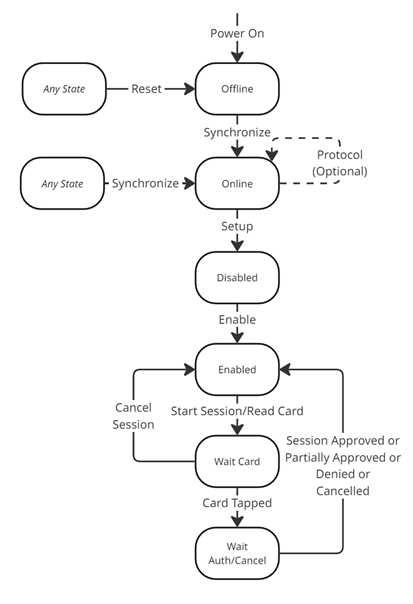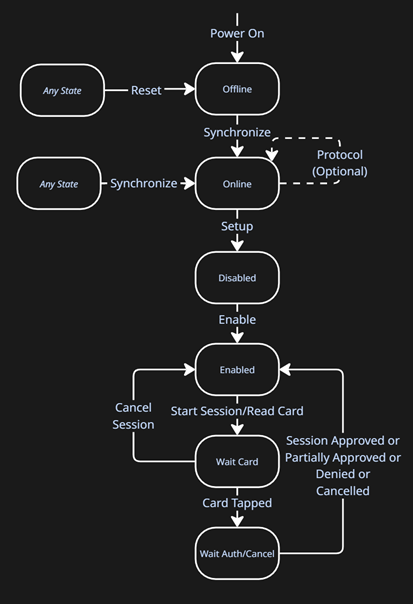Setup Flow
As previously detailed in Communication Setup, the PSP state must be Enabled prior to initiating any cardholder interaction. Below is an overview of this state flow.


The specified Offline and Online states referenced throughout the PSP integration documentation relate to the status of the PSP API only. They are not connected to any wider connectivity, such as Internet access.
State Descriptions
| State | Description | Reached from |
|---|---|---|
Offline | PSP is not online. This is PSP's default state. | Default state. Either a Reset command, or a timeout (in TCP/IP), or the terminal being powered on, will reach Offline. |
Online | PSP has been Synchronized | A Synchronize command achieves this state, from a wide variety of other states. It is most commonly the next step after Offline.This is the only state when Protocol can be sent. Protocol does not change this state. |
Disabled | Specific configuration has been sent to the terminal instructing it how to act in key scenarios. | The Setup command progresses the state from Online to Disabled |
Enabled | The terminal is ready to use - commands such as Start Session or Read Card can be sent. | A Enable command must be sent while the terminal is in Disabled mode.This state can be achieved automatically following various commands as shown above. |
The Setup flow must be used after any power cycles, so many Integrators choose to be 'Idle' in the Offline state and complete Setup prior to every transaction attempt. This reduces the need to 'keep alive' for a TCP/IP connection to periods during card processing only.
Integrators using an 'Always Scanning' approach however, will need to maintain the Wait Card state. This is outlined in the next section.